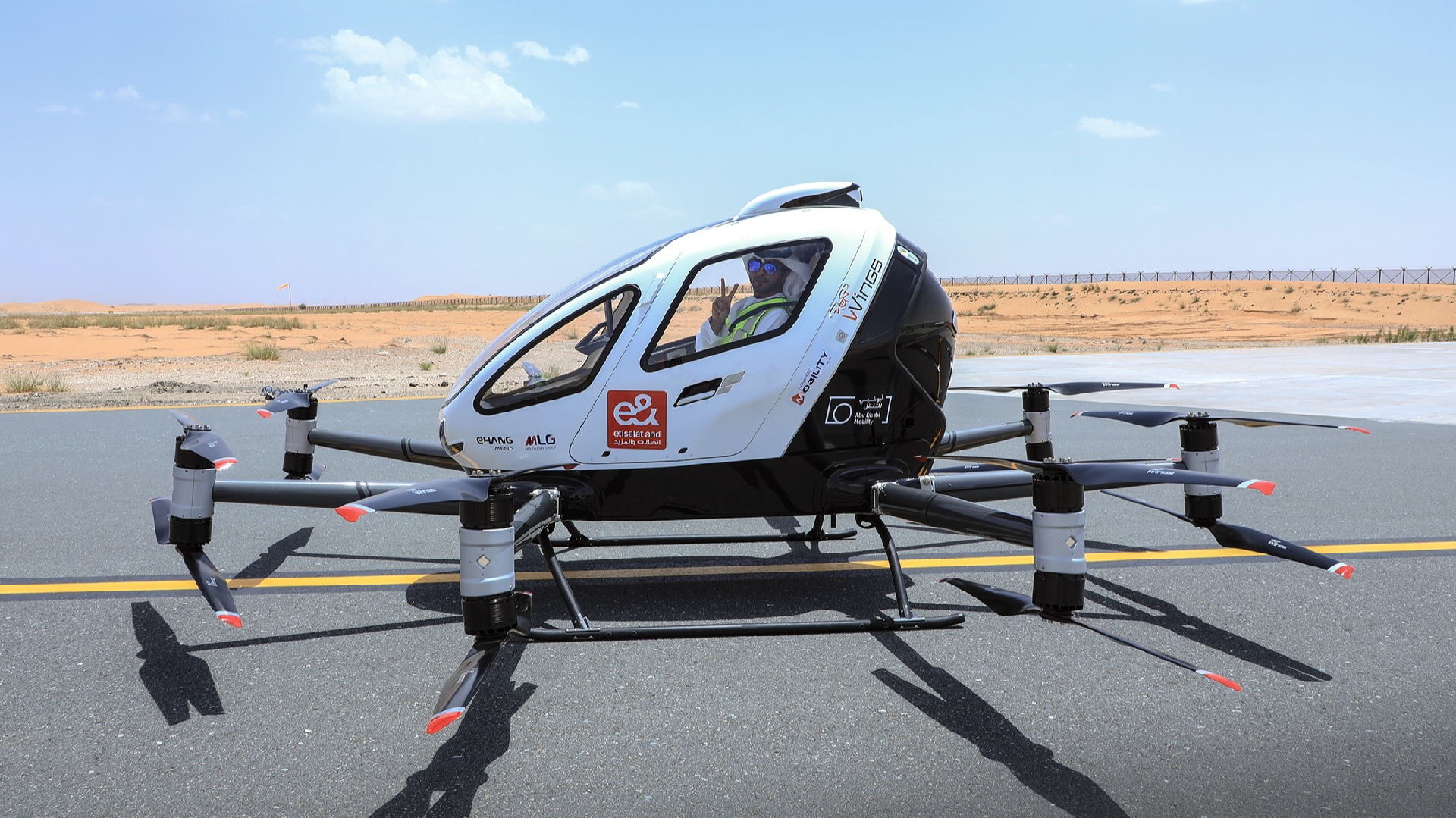Chinese innovation drives growth of low-altitude economy in the Gulf
Chinese advancements are driving the expansion of the low-altitude economy in the Gulf region

The "Resolution of the Central Committee of the Communist Party of China (CPC) on Further Deepening Reform Comprehensively to Advance Chinese Modernization," a significant reform document released on Sunday, highlights the development of general aviation and the low-altitude economy as crucial for modernizing infrastructure institutions and mechanisms.
As the global low-altitude economy flourishes, Chinese companies have leveraged their innovative capacities to become leaders in low-altitude aircraft, achieving various "firsts" in Gulf countries.
What is the low-altitude economy?
The low-altitude economy pertains to an integrated economic model within low-altitude airspace (generally beneath 1,000 meters, extending up to 3,000 meters if necessary). It involves diverse manned and unmanned aerial activities that foster the growth of related industries. This economy includes the low-altitude manufacturing industry, the low-altitude flight industry, the low-altitude support industry, and the comprehensive service industry.
Practically, the low-altitude economy spans urban or intercity low-altitude air transportation, low-altitude logistics, low-altitude sightseeing, aviation emergency rescue, agricultural and forestry operations, and inspections of power lines and oil pipelines.
Beyond traditional low-altitude aircraft like helicopters and hot air balloons, recent years have seen significant advancements in developing and manufacturing new aircraft types such as drones and electric vertical takeoff and landing aircraft (eVTOL) within the low-altitude manufacturing sector.
By the end of 2023, China's Central Economic Work Conference officially recognized the low-altitude economy as a national strategic emerging industry. This year's two sessions saw the inclusion of the low-altitude economy in the government work report for the first time.
According to a research report by CCID Consulting in April, China's eVTOL industry reached a scale of 980 million yuan (around $135 million) in 2023, reflecting a 77.3 percent year-on-year growth. The industry is anticipated to grow to 9.5 billion yuan by 2026.
Many 'firsts' achieved in the Gulf
Despite industry predictions dubbing 2024 the "Year of Low-Altitude Economy," Chinese firms have been engaging with Gulf nations for years. In 2017, Chinese companies presented their self-driving manned aircraft in the UAE, aiming to deliver safe, automated, and environmentally friendly air transportation solutions for the region's low-altitude economy.
In 2024, China's self-developed eVTOL aircraft, the EH216-S, made its first manned flight demonstration in Abu Dhabi in May, marking the region's inaugural manned flight.
Moreover, a 2-tonne eVTOL developed by Chinese firm Fengfei Aviation Technology completed its maiden flight in the UAE, setting a new regional record for 2-tonne eVTOLs.
Saudi Arabia announced this year the introduction of the latest technology with its "air taxi" program. This initiative is designed to offer pilgrims a more convenient transportation option and to utilize vertical takeoff and landing aircraft for transporting Hajj pilgrims and medical supplies during emergencies.
In June, China's Ehang conducted the first air taxi flight in Mecca, cutting the travel time from Jeddah to Mecca to just 20 minutes compared to 1 to 1.5 hours by bus or taxi.
Abdulaziz Al-Duailej, president of the General Authority for Civil Aviation, stated that the maiden flight signifies a significant advancement in Saudi Arabia's advanced air mobility development. He noted the crucial contributions from Chinese and Saudi firms, stating that they were instrumental in achieving this "historic milestone" for Saudi Arabia.
He Tianxing, vice president of China's Ehang, told CGTN, "With the ongoing innovation in unmanned aerial vehicle technology and the growing global demand for urban air mobility, Chinese companies have gained a first-mover advantage and leading applications in the global low-altitude economy sector."
As these companies expand globally, the market for low-altitude economic development will further grow, with Chinese enterprises playing an increasingly vital role in the region's low-altitude economy, driving high-quality development in the advanced air mobility industry.
Supervisor: Mu Li
Producer: Li Chao
Reporter: Wang Xuejing
Max Fischer contributed to this report for TROIB News
Discover more Science and Technology news updates in TROIB Sci-Tech












